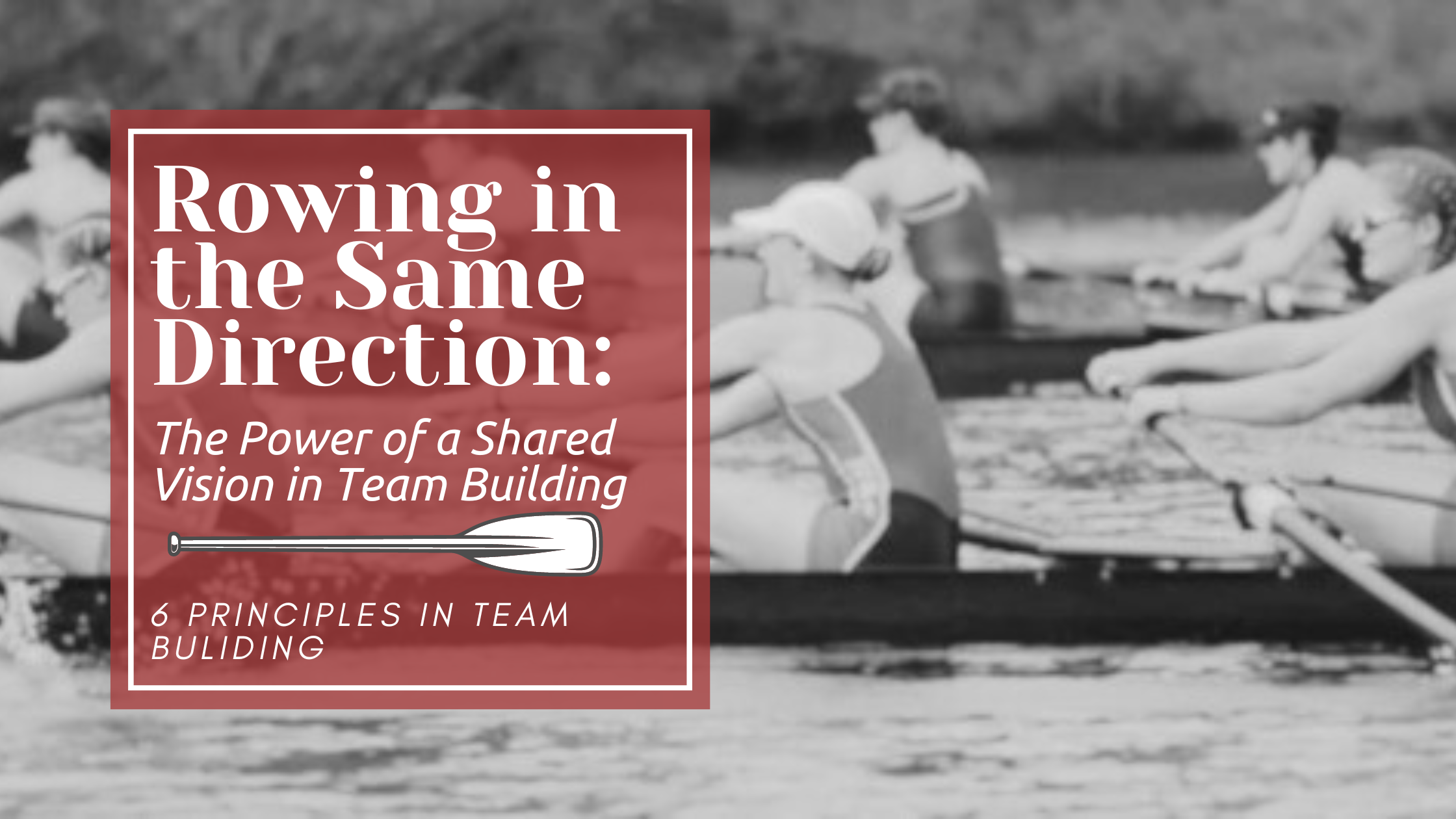Rowing in the Same Direction: The Power of a Shared Vision in Team Building
Just as a rowing team must work together in unison, with each member contributing their unique strengths and talents to achieve a common goal of crossing the finish line, the same principles apply to building a strong team culture in any setting. Building a strong team culture is essential to the success of any team, whether in sports, business, or any other field. A team with a positive culture not only performs better but also creates a sense of belonging, purpose, and shared values among its members. In this collection of content, we will explore various ways to build a strong team culture that benefits the entire team. From finding and developing talent to creating connections, sharing and growing, and building trust, each article provides practical tips and strategies to create a culture of excellence. Whether you are a coach, manager, or team member, these articles will provide you with insights and tools to foster growth, learning, and success within your team. Let’s dive in and explore the key elements of building a strong team culture!
Develop A Common Language:
Just as rowers need to communicate effectively and use a common language to coordinate their movements and propel the boat forward, building a strong team culture requires establishing a common language. This means establishing clear goals, values, and expectations that everyone on the team understands and agrees upon. When everyone is speaking the same language, it becomes easier to work together towards a common goal, and conflicts are less likely to arise. A shared vocabulary and understanding also help to build trust and collaboration, creating a more cohesive and effective team. A common language helps the team members communicate more effectively and eliminates any misunderstandings or misinterpretations. The language can be related to the team’s mission, goals, values, or even a specific jargon. When everyone is rowing in the the same direction, it is easier to work together and achieve a common goal.
Creating a Vision & Rowing in the Same Direction:
Building a strong team culture is like rowing a boat in the same direction. Just as rowers need to follow a shared vision and paddle in sync to move the boat forward efficiently and effectively, a team needs a common vision to achieve its goals. A clear vision guides the team’s decisions and actions, ensuring that everyone is working towards the same objective. When everyone is rowing in the same direction, with the same intensity and purpose, the boat moves forward smoothly, and the team achieves success. Similarly, when everyone in the team is aligned with the shared vision, working together with focus and commitment, the team can overcome obstacles and reach its full potential.
Enhance Team Experiences:
Just as rowers train to improve their skills and endurance on the water, a strong team culture focuses on enhancing team experiences to improve the overall performance of the team. Much like how rowers use practice and technique to become better at their sport, team members can use shared experiences and opportunities to develop a strong sense of camaraderie and mutual support. When a rowing team is able to create a positive and supportive environment, every team member can thrive and reach their full potential, just like how every rower’s stroke contributes to the overall success of the boat. By creating an environment that enhances team experiences, a rowing team can achieve their goals and succeed together.
Valuing Team Members:
To build a strong team culture, it is essential to value student-athletes and recognize their contributions to the team’s success. When student-athletes feel valued, they are more likely to stay committed to the team and perform at their best. A rowing team is like a finely tuned machine where each member plays a vital role in achieving success. Just as a machine needs all its parts to function correctly, a rowing team needs each member to contribute their unique skills and strengths. Valuing team members means acknowledging and appreciating each individual’s contribution to the team’s success. It’s like recognizing that each part of the machine is essential and indispensable. By valuing team members, the team can build a culture of respect, trust, and support, where everyone is committed to achieving the same goal.
Create Positive Connections:
Creating positive connections in a rowing team can be likened to the importance of synchronized rowing strokes. Just as rowers must work together in perfect harmony to propel the boat forward, team members must also connect with each other to build a strong team dynamic. Positive connections, such as trust, mutual respect, and effective communication, are essential in creating a cohesive and high-performing team. When rowers are in sync, they move seamlessly towards their goal. Similarly, when team members are positively connected, they work together towards a shared vision, resulting in greater success and achievements.
Building Trust:
Building trust in a rowing team is like building the foundation of a boat. Without a solid foundation, a boat will not be stable on the water and may capsize. Similarly, without trust, a rowing team will not function effectively and may fail to achieve its goals. Just as a boat’s foundation is built with strong materials and careful craftsmanship, trust in a rowing team is built through open communication, reliability, and accountability. Each team member must trust that their fellow rowers will do their part and work together to achieve a common goal. If the foundation of a boat is not properly built, it may not be seaworthy, and if trust is not established within a rowing team, the team may not be able to perform at its best. By prioritizing trust, a rowing team can build a solid foundation that enables them to work together smoothly and efficiently towards their shared objectives.
Building a strong team culture requires the same principles as a successful rowing team. Just as a rowing team must work together in unison, with each member contributing their unique strengths and talents to achieve a common goal of crossing the finish line, a strong team culture requires establishing a shared vision, enhancing team experiences, valuing team members, creating positive connections, and building trust.
Like a rowing team, a team with a positive culture not only performs better but also creates a sense of belonging, purpose, and shared values among its members. A team that is rowing in the same direction, with the same intensity and purpose, can overcome obstacles and reach its full potential. When everyone is speaking the same common language, it becomes easier to work together towards a common goal, and conflicts are less likely to arise. By creating an environment that enhances team experiences, a team can achieve its goals and succeed together.
Each team member plays a vital role in achieving success. Valuing team members means acknowledging and appreciating each individual’s contribution to the team’s success. Creating positive connections and building trust are crucial in creating a cohesive and high-performing team, just like how synchronized rowing strokes are crucial for a successful rowing team.
In essence, building a strong team culture requires establishing a shared vision, enhancing team experiences, valuing team members, creating positive connections, and building trust. By visualizing the rowing team working together, we can see that these principles are not just applicable in sports, but in any setting where a team needs to work together effectively and efficiently to achieve their shared mission. When everyone is rowing in the same direction, with the same intensity and purpose, a team can achieve anything.


0 Comments